Abstract: Label also called self-adhesive labels, adhesive vinyl, sticky, pressure-sensitive paper, is a paper, film or special materials for the fabric, the back surface coated with an adhesive, in order to protect the silicon-coated paper base paper A composite material that has been processed into a finished label after being processed by printing, die cutting, and the like. When applied, it can be applied to the surface of various substrates by simply peeling off the base paper, and it can be automatically labeled on the production line using a labeling machine.
Keywords: self-adhesive label, energy consumption label, adhesive label, self-adhesive retention, label peeling force
Significance: Good plasticity of self-adhesive labels, widely used in various industries, home appliances and electronic products, daily chemical products, supermarket logistics industry, anti-counterfeiting industry, etc. For merchants, it is a good means of information transmission, reflecting the company's brand model and Product parameters. For consumers, you can quickly and easily understand the product information to make it faster and more convenient to choose the products you need.
The labels are used according to different industries, and the workmanship and materials are different. There are mirror coated paper, laser laser film, offset paper, removable glue and so on. In the process of selection, the merchants should also choose according to the properties of different materials. The initial tack, the tackiness, the peeling force, the fastness of the printed ink layer, etc. are the basic entrance inspection requirements of the label zui, combined with the adhesive for small household appliances. Labels to analyze how to control quality and detection methods.
Executive Standard: CY/T 93-2013 "Printing Technology Adhesive Label Quality Requirements and Inspection Methods"
Citation standard: GB/T 4851-2014 "Test method for adhesiveness of adhesive tape"
CY/T 93-2013 : Relevant provisions
5.1.5 Physical property detection method
5.1.5.2 The viscosity shall be tested in accordance with the provisions of GB/T 4851-2014.
Note: Since the three indicators of peel strength, viscosity and initial tack are wide-ranging and specific technical indicators cannot be determined, this document only specifies the test methods for the three indicators.
According to the relevant standards, the physical testing of self-adhesive labels involves five tests of peel strength, holding viscosity, initial tack, ink layer wear resistance, and ink layer bonding fastness to test product quality. According to the standard, we will test the adhesion test below. Analyze and explain.
Viscosity-related standard regulations and testing methods: GB/T 4851-2014: Relevant provisions
3.1 holding viscous static shear adhesion
The pressure-sensitive adhesive tape resists the ability of the bonding surface to be broken by the parallel shear external force.
4.1 Classification
This standard method can be divided into the following types according to different objects and temperature conditions of adhesive tape bonding:
Method A: Test method for adhesion of an adhesive tape to a vertical standard steel plate;
Method B: Test method for adhesion of an adhesive tape to a vertical test plate coated with a NIST SRM1810A standard fiberboard;
Method C: Test method for adhesion of an adhesive tape to a vertical test panel covered with a fiberboard specified by the buyer and the seller;
Method D: Test method for holding a fiber-reinforced adhesive tape and a horizontal standard steel plate;
Method E: Test Method for Viscosity of Fiber Reinforced Adhesive Tapes and Horizontal Test Plates Covered with NIST SRM1810A Standard Fiberboard
Method F: Test method for holding a fiber-reinforced adhesive tape and a horizontal test plate covered with a designated fiberboard of a buyer and a seller;
Method G: A test method for holding the adhesive tape and the vertical steel plate after standing for 10 minutes at a high temperature.
Table 1 Adhesive tape holding test method
method | user target audience | the way | Result characterization | Reference range | Sample size | Weight quality |
A | Adhesive tape to standard test steel plate | vertical | Time (logarithmic reduction) | <4h | (12±0.5)mm×150mm | (1000±5)g |
B | Adhesive tape pair with standard fiber Plate covered steel plate | vertical | Time (logarithmic reduction) | <4h | (12±0.5)mm×150mm | (1000±5)g |
C | Adhesive tape for steel sheets covered with fiberboard approved by both parties | vertical | Time (logarithmic reduction) | <4h | (12±0.5)mm×150mm | (1000±5)g |
D | Fiber reinforced adhesive tape Standard test steel plate | Level | Displacement (arithmetic mean) | ≥4h | (12±0.5)mm×300mm | (4500±5)g |
E | Fiber reinforced adhesive tape for steel sheets covered with standard fiberboard | Level | Displacement (arithmetic mean) | ≥4h | (12±0.5)mm×300mm | (4500±5)g |
F | Fiber reinforced adhesive tape for steel sheets covered with standard fiberboard | Level | Displacement (arithmetic mean) | ≥4h | (12±0.5)mm×300mm | (4500±5)g |
G | Same as Method A, but the sample should be placed at the set test temperature for 10 min and then tested at the same test temperature. | vertical | Time (logarithmic reduction) | (12±0.5)mm×150mm | (1500±5)g |
method
Method A: Adhesive test method for adhesive tape and vertical standard steel plate is explained.
5.1 Principle: Method A in this standard measures the adhesive tape to standard steel plate by the failure time of the adhesive tape under the condition of constant load and temperature (23±1) °C and relative humidity of (50±5)% . Sticky.
Adhesion to standard steel sheets: Adhesive strips are bonded to a standard steel sheet at a controlled rolling rate. The steel plate was mounted vertically with a standard weight weight suspended at the free end of the tape to determine the bond failure time.
5.3 Instruments
5.3.1 Sample cutter
The sample cutter fixes the two single-edged blades in parallel planes, and the two blades are separated to maintain a precise distance to form a cutter with an accurate sample width; the appropriate two cutters ensure a cutting width of 12 mm. And 24mm, or use other suitable knives that will not damage the edges. The accuracy of the distance between the blades is a nominal width of ± 0.1 mm.
5.3.2 stainless steel plate
The stainless steel plate is very flat, at least 125mm long, 50mm wide and 1.1mm thick. The stainless steel (hereinafter referred to as steel plate) type conforms to the O6Cr19Ni10 material specified in GB/T3280-2007, and is annealed and polished. The surface of the steel plate is bright and the surface roughness (GB/T2523-2O08). ) is (50 ± 25) nm.
Do not use steel sheets with more stains, discoloration or scratches. Prior to use, clean the new steel plate as described in 5.5.2. In use, the test surface of the protective steel sheet is not scratched and contaminated and is stored under the conditions described in 5.4.1.
5.3.3 Motorized or manual pressure roller
5.3.3.1 The cylindrical steel press roll (referred to as the press roll) has a diameter of (85 ± 2.5) mm and a width (45 ± 1.5) mm. The surface is covered with a rubber of about 6 mm thick and the hardness is (80 ± 5). Shaw A. The surface is round and has no unevenness. The quality of the press roll is (2000 ± 100) g.
5.3.3.2 During the course of use, the weight of the press roller should not be increased in any instrument part. The press rolls are either maneuvered or manually moved at a rate of (10 ± 0.5) mm/s.
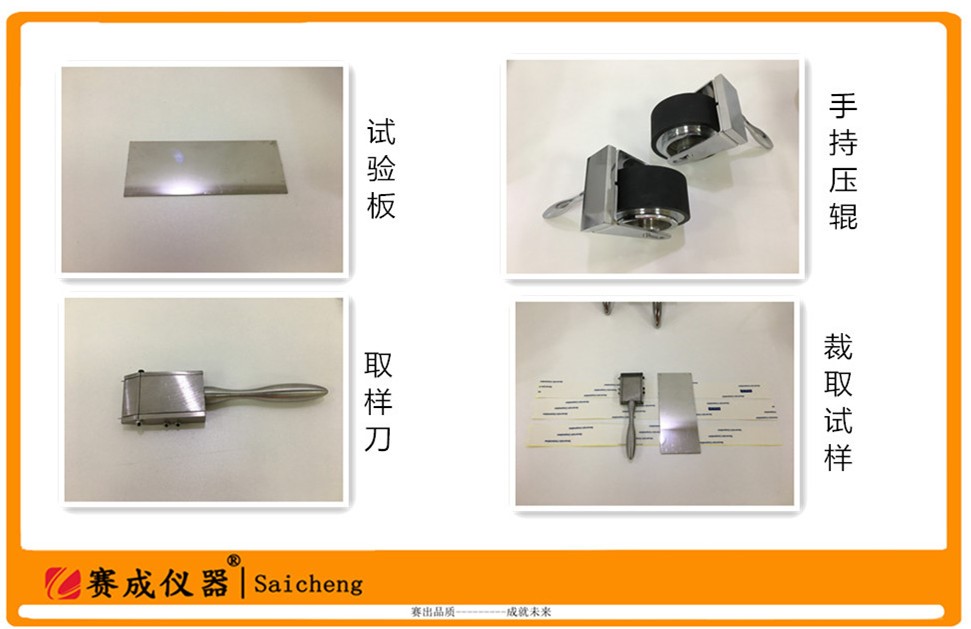
5.3.4 Test stand and auxiliary equipment
5.3.4.1 Test stand
The test frame fixes the sample in a range of 0° to 2° from the vertical direction so that no peeling force is applied to the adhesive tape when mass is applied to the adhesive tape.
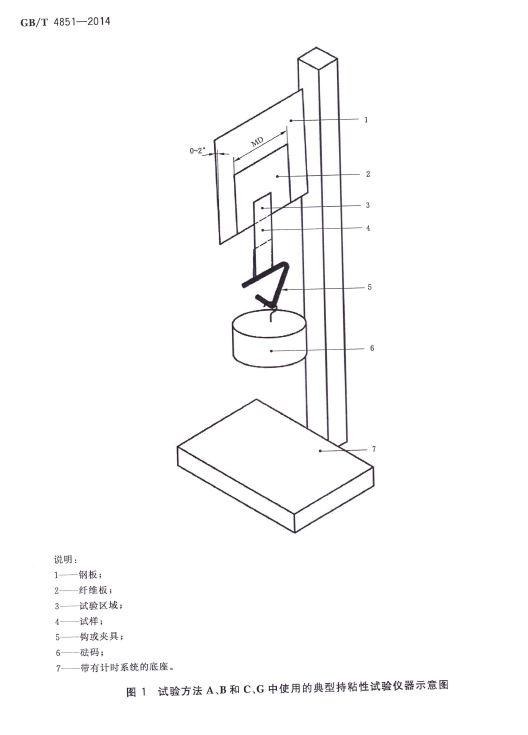
5.3.4.2 Fixture: The clamp will fix the weight on the specimen so that the load is evenly distributed within the width of the specimen.
5.3.4.3 Test weight
The test weight is (1000 ± 5) g, or other weights are used. The quality of the fixture in 5.3.4.2 is included in the total weight quality.
5.3.4, 4 timing system
The timing system is used to record the time interval between the application of the load to the sample and the separation of the sample from the steel plate.
5.4 Samples and samples
5.4.1 State adjustment. The adhesive tape sample was placed at a constant temperature of (23 ± 1) ° C and a relative humidity of (50 ± 5)% for 24 hours. If these tolerances cannot be maintained, use the possible tolerances that zui is close to and indicate in the report.
5.4.2 The test requires three specimens, each of which has a width of (12 ± 0.5) mm and a length of approximately 150 mm. If a wide (24 ± 0.5) mm or other width specimen is used, the results are stated.
5.4.3 Before preparing the sample, remove the 3~6 layers of adhesive tape outside the sample.
5.4.4 For each test, take 3 samples. The sample was unwound from a freely rotating tape sample roll at a rate of 500 mm/s to 750 mm/s. If the unwinding force of the adhesive tape is large and the adhesive tape sample cannot be unwound at a predetermined rate, the sample is unwound at a rate of approximately 500 mm/s.
5.4.5 When the width of the adhesive tape exceeds the width specified in the test, use the sample cutter described in 5.3.1 to cut the specified width from the center position of the adhesive tape roll specified in 5.4.4. kind.
5.4.6 Attach the sample to the test plate within 5 min after unwinding.
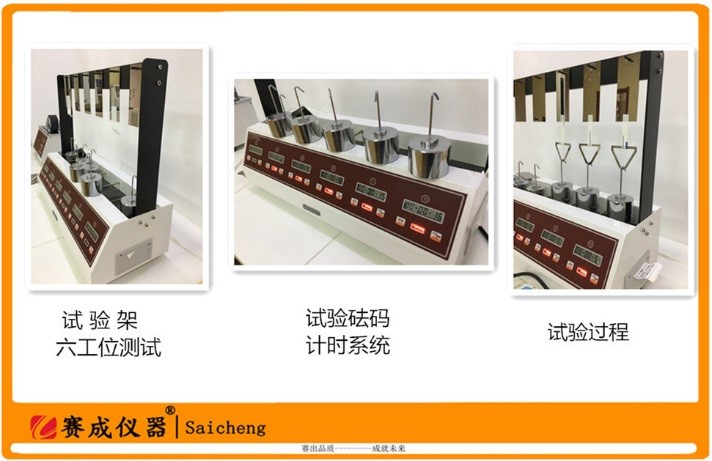
5.5 Test procedure
5.5.1 Standard test conditions: The standard test conditions are the same as those for the sample and sample adjustment in 5.4.1.
5.5.2 Preparation of test plates
The steel plate was pretreated, the steel plate was wiped with acetone and methanol, and dried with a new absorbent cleaning material. The same solvent was used and the washing was repeated 3 times. The zui is washed once with acetone.
The cleaned steel plate is kept at least for 10 minutes; the test steel plate is not cleaned within 10 hours. In order to obtain the result of the treatment , the new steel plate is washed with acetone at least 10 times before use.
5.5.3.1 Sample preparation
a) Place the sample at the center of one end of the test steel plate, and uniformly roll the adhesive tape sample to a (12 ± 0.5) mmX (12 ± 0.5) without applying pressure. Within the area of ​​mm, the exposed portion of the adhesive in the free area of ​​the sample can be shielded.
b) In the rolling fit process, in order to prevent damage to the end specimen of the test panel, another identical test panel or a slightly thinner test panel is placed under the free end of the specimen and aligned with the end of the test panel. The sample was rolled back and forth from the pasting test area along the length direction.
c) Prepare at least 3 samples. Each sample was prepared separately and then tested within 1 min. For other adhesive tapes other than the adhesive tape for packaging, other placement time can be used, as indicated in the report.
5.5.3.2 Holding test
After attaching the sample as described in 5.5.3.1, the following actions are completed within 1 min.
Clamp the clamp to the free end of the specimen, ensuring that the clamp completely clamps the entire width of the specimen and distributes the load evenly.
Place the entire test piece on the test stand so that the free end of the sample is perpendicular, ensuring that no peel force is applied to the sample.
Gently apply the weight to the fixture to avoid shear impact on the specimen. The time taken for the sample to completely separate from the test plate was recorded.
5.6 Test results
Each sample result is converted to its usual log or natural logarithm. Obtain the arithmetic mean of all the logarithms and then find the appropriate inverse logarithm to get the time.
5.7 Test report: The test report shall include the following information:
a) Standards for reference:
b) use the instructions of this test method to indicate deviations from this standard;
c) the marking of each test adhesive tape;
d) the time required to completely separate the adhesive tape calculated from 5.6 from the steel plate;
e) Sample placement time (not specified for 1min);
f) indicate the contact area of ​​the sample other than (12 ± 0.5) mm × 12 ± 0.5) mm;
D Failure mode: cohesive failure, bond failure or other observed damage:
- cohesive failure: adhesion failure, internal separation of adhesive;
——Bonding failure: adhesion failure, the interface between the adhesive and the substrate is strict, leaving negligible residue
h) Non-standard test conditions.
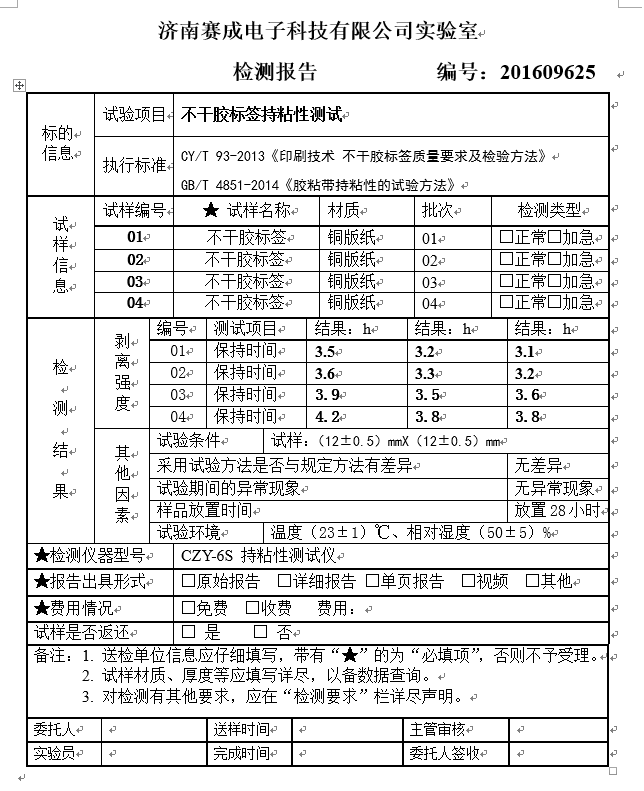
in conclusion
Initial tackiness, holding viscosity, peeling force, and bonding strength of printing ink layer are the basic entrance inspection requirements of the label. The quality of the label directly affects the use and aesthetics of the label. The label manufacturer can use different instruments to adapt to different instruments. Batches of products are tested to analyze and determine if the label is acceptable.
For more related testing equipment, you can consult Jinan Saicheng Electronic Technology Co., Ltd.
Jinan Saicheng looks forward to enhancing technical exchanges and cooperation with enterprises and institutions in the industry!
Ready-to-eat Double Packed Sweet Corn
In this category is sweet corn from Jilin Province Agricultural Sister-in-law Food Co.
The physical characteristics of maize consist of grain colour, grain shape, seed coat lustre, grain length, grain width, 100 grain weight, grain diameter, uniformity of the seed and hardness. In most cases, the colour of the endosperm of mature maize kernels is yellow or white, while the seed coat and paste layer are colourless and transparent. Depending on the colour of the kernels, there are three types of maize: yellow, white and mixed. Depending on the kernel form, hardness and different uses, maize is divided into two types: common maize (hard, intermediate, horse-tooth, hard-horse, horse-hard) and special maize (high-lysine maize, high-oil maize, sweet maize, cracked maize, glutinous maize).
The sweet corn of Jilin Province Agricultural Sister-in-law Food Co., Ltd. belongs to the special corn category of yellow corn.
Also known as fruit corn. The leaves on the outside are light green (only the ears are in the pack, we have removed the leaves for you) and the kernels inside are white or yellow. Sweeter than regular sweet corn, but lower in starch and rich in vitamin E and fibre, which is anti-ageing and aids digestion. Perfect for eating raw, mixed with vegetables in salads; it can also be steamed, but don't cook it for too long, about 5 minutes.
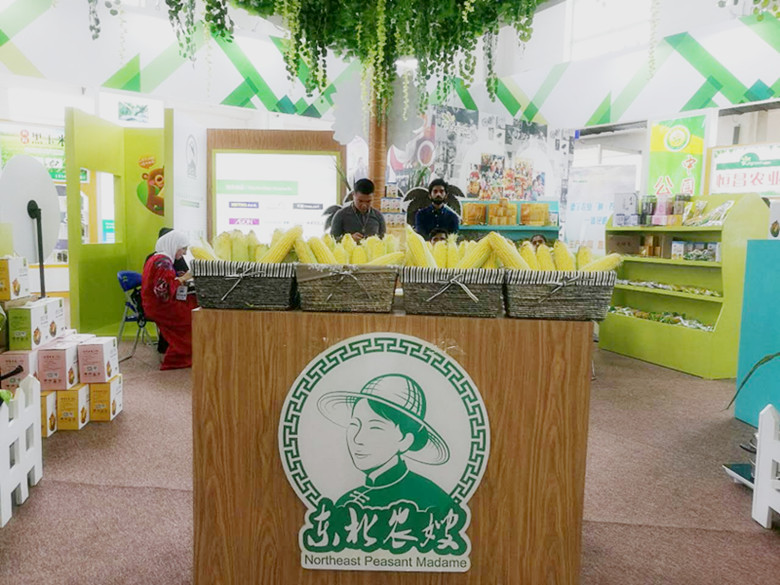

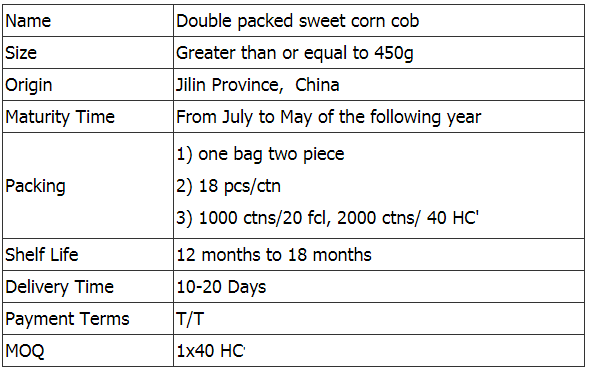
If you have any questions, please contact us directly. If you have any questions, please email us directly.
Delectable Sweet Corn Cob,Microwave Sweet Corn Cob,Country Sweet Corn,Ready To Eat Sweet Corn
Jilin Province Argricultural Sister-in-law Food Co., Ltd. , https://www.nscorn.com